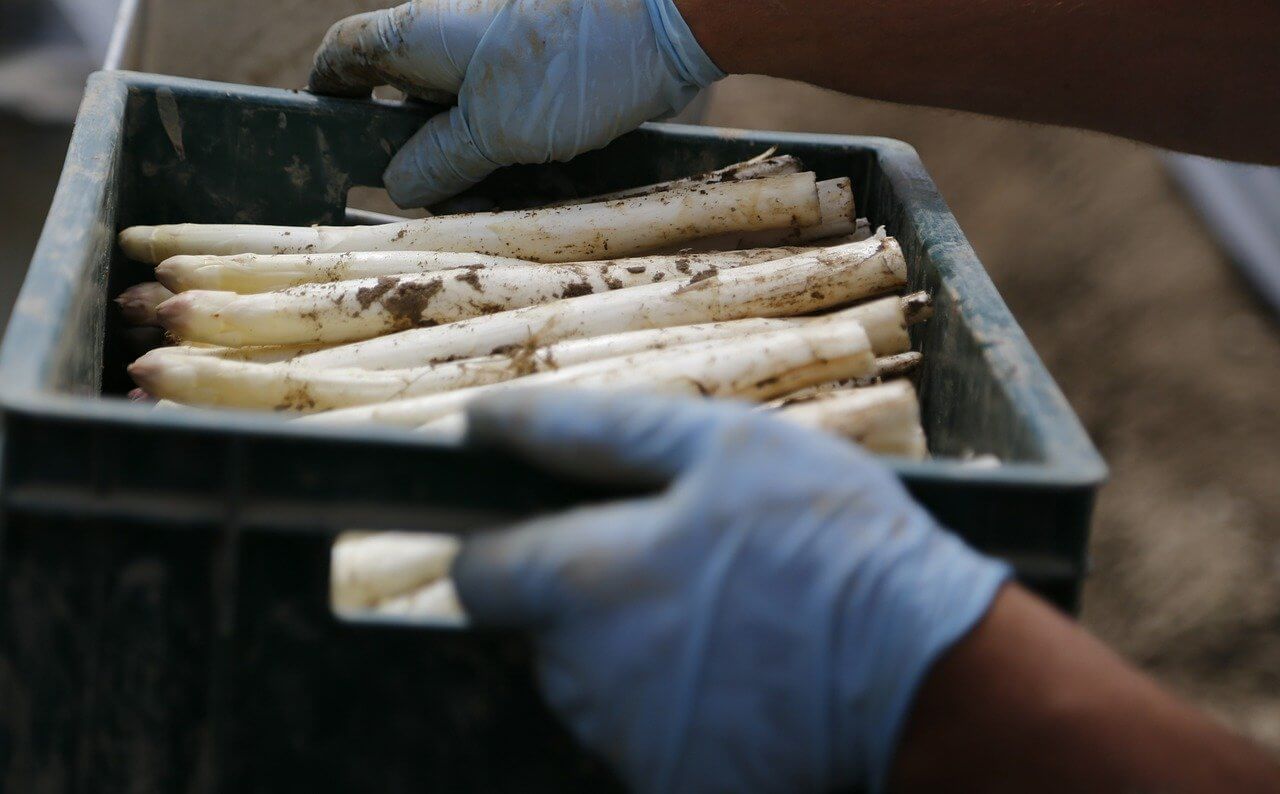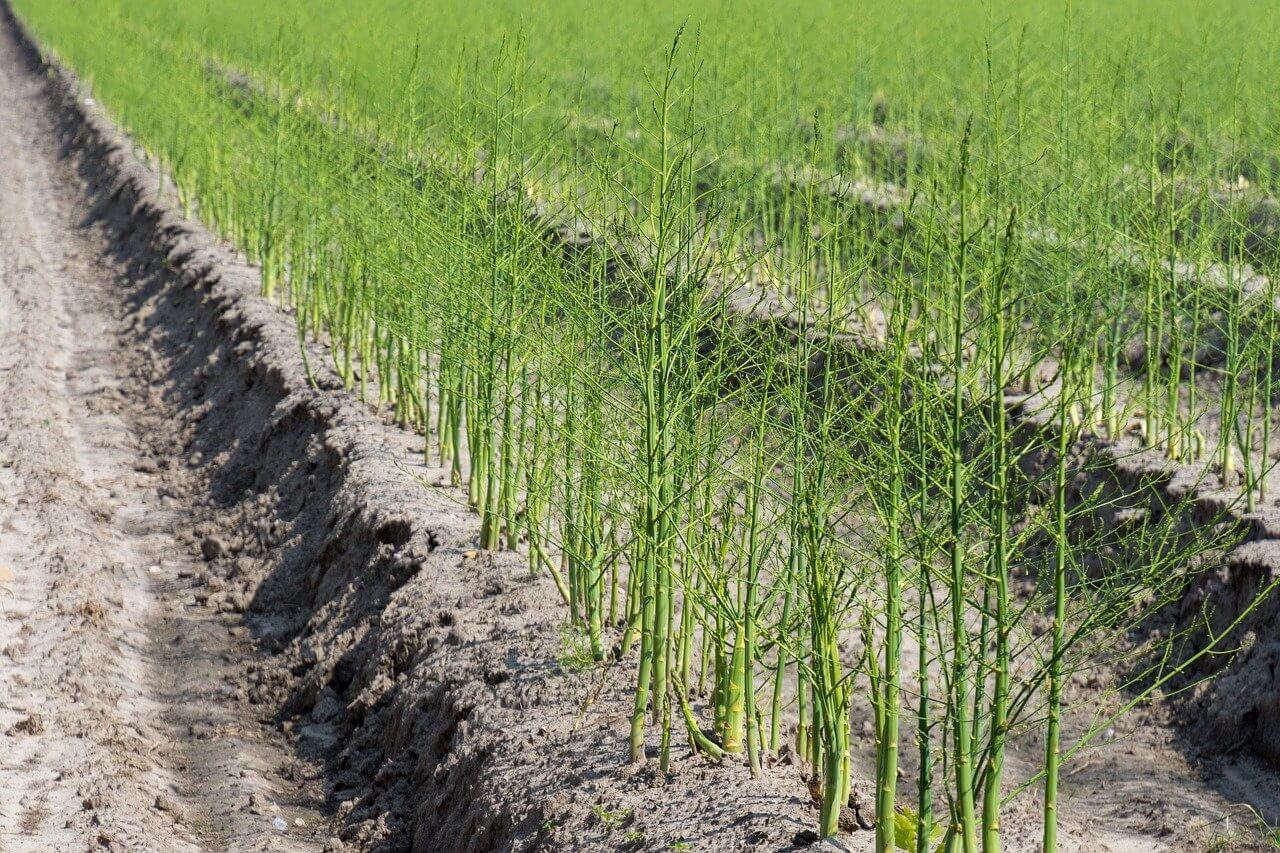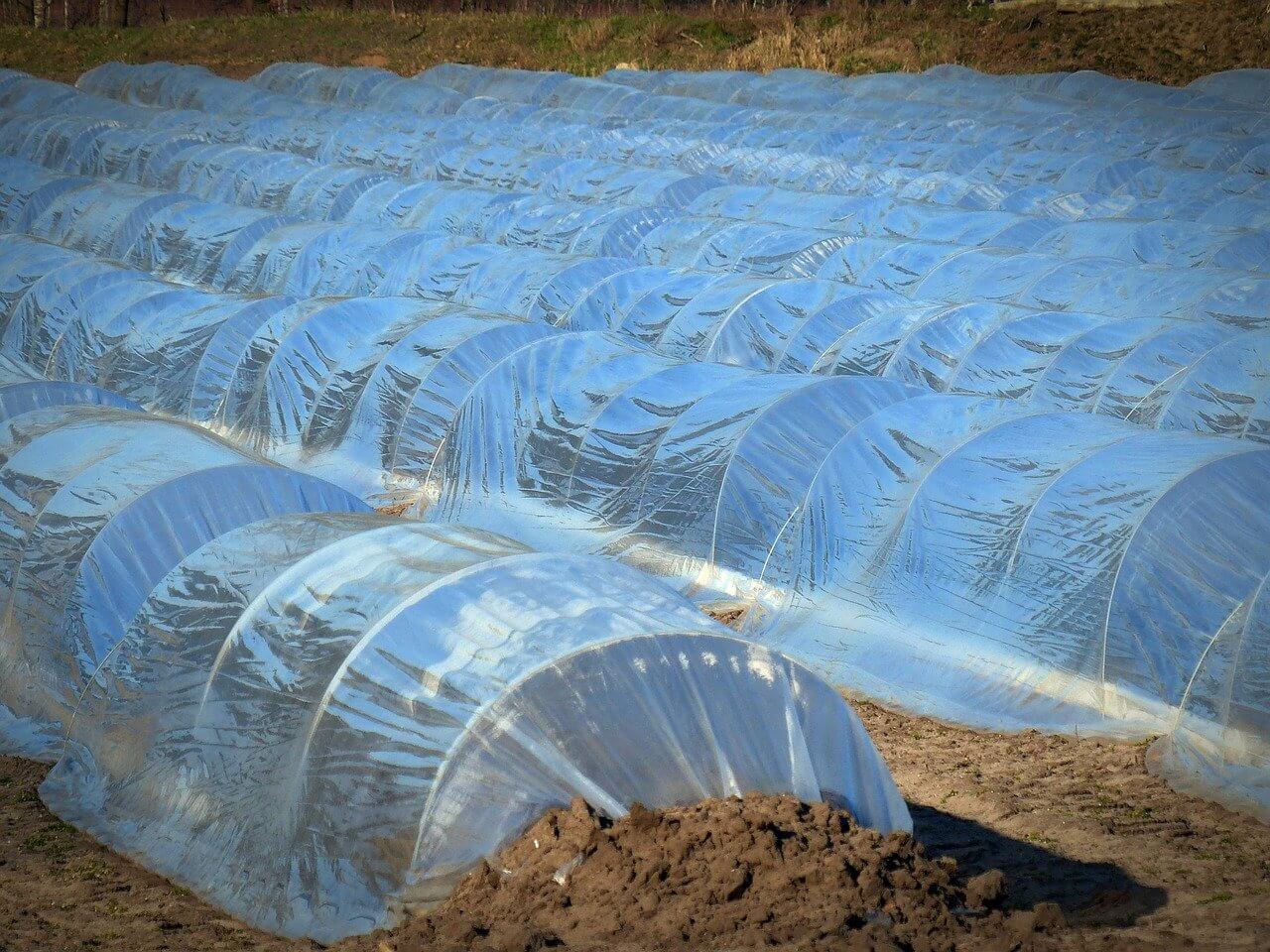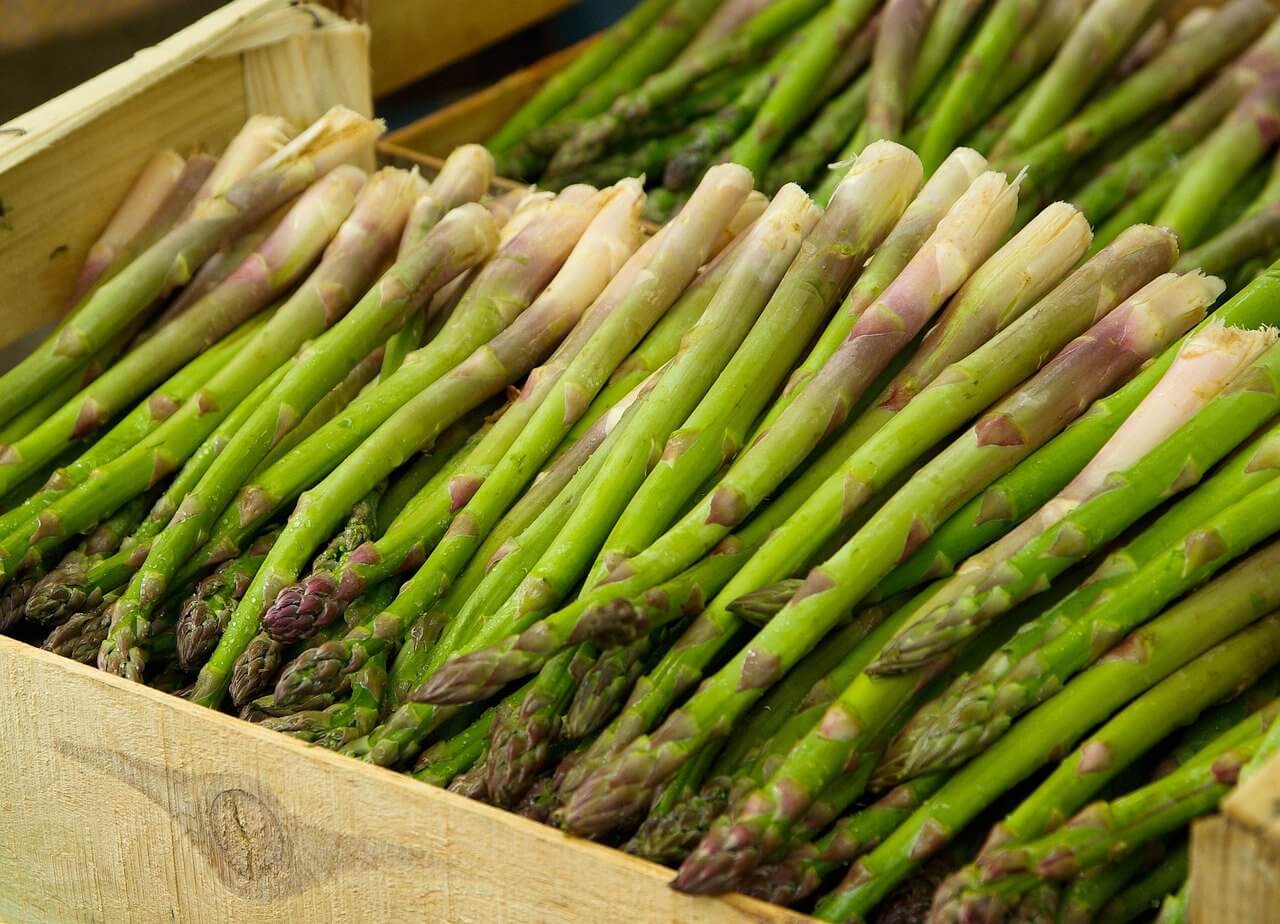Asparagus is one of those vegetables that earns you a lot of respect from seasoned farmers, if you manage to grow and produce your own crop. But why does it have a reputation of being so hard to grow?
Asparagus is a vegetable that can be slightly fussy, and so managing to produce a decent crop of it can be tricky. Never fear, however! We are here to take you through the steps of how to grow asparagus, so that you can be the envy of everyone at your farm or homestead!
What You'll Learn Today
What Is Asparagus

Asparagus is a perennial plant, belonging to the species Asparagus. It has been used as a vegetable since around 3000 BC; a testament to its deliciousness and versatility!
A recipe for cooking asparagus is known in one of the oldest cookbooks known to man, so this is a truly well known and loved vegetable.
This plant is used to salty environments, so it can be grown nearer the sea than other vegetables. This means that salt can be used to keep weeds down in asparagus beds more easily than it can with other vegetables.
Asparagus is not only tasty and versatile, but it is also very good for the body and packs a real nutritional punch.
This is a well loved, well known and much cultivated vegetable, that has been grown for centuries. It is relatively easy to grow, after the initial period of inactivity. Because of this, it is a very popular food all over the world.
Health Benefits Of Asparagus
Asparagus is not only a delicious vegetable, but it comes with an impressive raft of vitamins and minerals which greatly benefit the human body. This means that you can eat piles of it, guilt free!
Firstly, asparagus is low in calories. You can eat loads of it without affecting your daily calorie count much, and you can be sure that this little vegetable will not pile on the pounds – even if you eat it all day every day!
Asparagus contains a good amount of fiber, something that is essential for gut health. Extra fiber will also make you feel fuller for longer, meaning that you are less likely to snack on less suitable foods.
Asparagus is counted among the foods that is good for weight loss, because of its lack of calories and the fact that it is very good for the digestive system and can help to keep everything “regular” as it were!
This little vegetable contains high amounts of both folate, important for a healthy pregnancy and cell growth, and vitamin K, essential for healthy bones and blood clotting.
Asparagus also contains vitamins A, C and E, as well as potassium, phosphorous and zinc. These vitamins, minerals and micro nutrients are all great for the body, and add to the appeal of asparagus.
This unassuming vegetable contains a lot of antioxidants too, that can help prevent your body being damaged by free radicals and can help protect you against chronic inflammation, cancer and other conditions.
How To Grow Asparagus

Asparagus is best grown from “crowns” – that is, year old plants that have already been established for a year or so. You can grow them from seed, but this does not yield such good results.
Here are some useful tips:
- Plant the crowns in the spring, and allow them time to settle themselves in the soil. They will need 2 years before you can actually start to harvest any decent spears – but it really is worth the wait!
- Your asparagus bed should be in a sheltered yet sunny position in your farm, in well drained soil that has been well fertilized (asparagus is a hungry plant that likes a lot of nutrients).
- If your soil is acidic then you may need to add some lime, because asparagus like soil with a pH level of around 6.5-7.5.
- Plant the crowns as soon as possible after you receive them, to reduce potential for damage to the plant. They like good drainage, so go for a deep trench of about 10” deep by 12” wide.
- Add a good load of well rotted manure to the bottom of the trench, to feed the plant well for now and in the future years. Pile the soil you took out to add the manure back on top of the manure, to make a ridge at the middle of the trench.
- Plant the asparagus crowns on top of the ridge, with their roots hanging over the edges. Space the plants around 18” apart, because asparagus do like a bit or space between them.
- Cover the crowns with around 3” of soil, the firm them down and water well. Add a couple of inches of well rotted manure on top, to give them a really good base of nutrients before they get started.
You will have to have patience to grow this delicious plant; at least 2 years will have to pass before you can start harvesting it in any sort of quantity. This is to give the plant a chance to grow strong, and healthy before it starts being harvested.
This is a great, comprehensive video on how to grow your asparagus:
How To Grow Asparagus From Cuttings
Growing asparagus from cuttings is actually the best way to grow asparagus. This is not a plant that produces well from seed – and if it does, it can take many years to become established.
Cuttings, or crowns, from an established plant, are your best bet when planning your asparagus bed. These can be easily established in your homestead, and can start producing delicious spears within a year or two.
Place the crowns in a deep trench, with the roots down and the buds up, and firm up the soil around the plant. Don’t worry if it looks covered over, the spears will grow up through the soil.
How To Grow Asparagus In A Container
Asparagus can grow in a large container if you don’t have a garden to grow it, and it can be very successful.
As long as you have a large enough container for asparagus to spread its roots out, and you use enough compost, manure and nutrients to allow the plant to thrive, then you can grow asparagus in a container.
The first thing you need to do, once you have found a suitable container, is to make drainage holes in the bottom. Asparagus will not enjoy sitting in water! Allowing your container to drain will help to prevent rotting of the roots.
Your asparagus container should be placed in a position where it receives at least 8 hours of sunlight every day, and you must remember to water it regularly.
As with any asparagus plant, you should not try to harvest your asparagus plants for at least the first two seasons; just leave them well alone and resist the temptation to pick off those lovely spears!
How To Grow Asparagus In Pots
Asparagus has quite a large root system, and it can spread below the soil as it ages, so it is not really recommended to grow them in pots – unless you have a really big pot!
If you desperately want to grow asparagus but you don’t have any garden space, you will need to source the biggest pot you can possibly find. Fill it with asparagus’ favorite compost, plant your crown, and wait.
If it is grown in a pot, your asparagus will probably need more feed than one that is grown in the garden, as the quality of the soil can deteriorate. Plenty of mulch and compost added regularly is key.
When grown in pots, the lifespan of the asparagus is considerably shortened; you may only get between 2 and 4 seasons of harvestable spears before you have to replace the crown and start again.
When Is The Best Time To Transplant Asparagus

The best time to move your crowns about is in Spring, before the plant has started producing any spears and is still relatively dormant after the colder months. They have very long, tentacle-like roots, so you’ll have to take care!
Although asparagus can be transplanted at any point when it is dormant, Spring is the best time, as it will be just before the plant starts to produce, so it can be well settled in its new spot before it starts working hard.
Using a fork or a spade, dig around the plant, a little way out from the main crown, to avoid accidentally cutting through the roots.
When you have lifted the crown from the soil, give the roots a gentle little trim before you replant it in its new spot – this will give the plant a little boost and force it to start producing new roots and shoots.
Transplanting asparagus plants is not the easiest thing to do, and it can stress the plants – but as long as you do it carefully and ensure that the plant has a good trench filled with compost to move into, you (and your crop!) should be fine.
When To Cut Back Asparagus Plants

Asparagus needs to be harvested in its third year of growth, to ensure that the plant has had the best start in life that it possibly can have.
Asparagus plants only need cutting back or dividing when they are old, or not producing as well as they have done in the past.
To cut them to use them as a vegetable, slice the shoots off from a couple of inches below the ground; this should give you a good long stem as well as encouraging new growth for the following year.
What Is The Best Fertilizer For Asparagus
Asparagus likes a balance fertilizer the best; one that contains equal parts of Potassium, Phosphorus and Nitrogen. You don’t have to fertilize it in the first year, but after it is important to fertilize your asparagus well.
Asparagus also likes a good dose of well rotted manure added to its soil once a year, to give it a good boost of nutrients and help it grow big and strong (unless you prefer your asparagus skinny… 🙂 ).
Why Does Asparagus Have Such A Long Growing Season
Asparagus is a plant that needs to be left alone for the beginnings of its life; if it is harvested too early then the plant won’t produce anything decent. Therefore, when you start an asparagus bed, you need to leave the plants alone for 2 years.
If you start to harvest your asparagus plants too early then they will not thrive as well, and you will find that you are scraping off small, thin, twiggy stems when you should be raking in large thick spears.
Asparagus likes to take its time; it needs to gather up the nutrients from its surroundings that you have (hopefully) put into the soil. A little patience goes a long way with this plant; give it enough time and space and it will reward you richly!
Types Of Asparagus
Asparagus comes in three different types – Green, White and Purple. The green type is the standard one; the white is one that has been bred in “captivity” as it were, and the purple kind is an entirely different genus.
How To Force Asparagus
Forcing a plant means making it start to produce earlier than it normally would, but the means of some nifty little farming hacks.
Forcing involves keeping a vegetable covered, and warm. These are the most important things to consider when trying to make anything produce quicker. You can force your asparagus to start producing spears sooner than your contemporaries’!
Asparagus should not be “forced” until it is in its fourth year of growth; if you try to do it sooner then you will probably not get the best results.
Cover the asparagus with a frame, and prevent it from spreading or traveling too much, and it should reward you with a good lot of healthy, early spears.
Final Words
Asparagus is a delicious vegetable, with myriad health benefits and different, exciting ways of cooking it. Hopefully now you are little better armed with the ways of this quirky vegetable, so you can keep your cupboards supplied with it! Here are a few tips how to store it properly, and how to can it.
If you are looking for more growing guides, here is a popular one about bamboo.